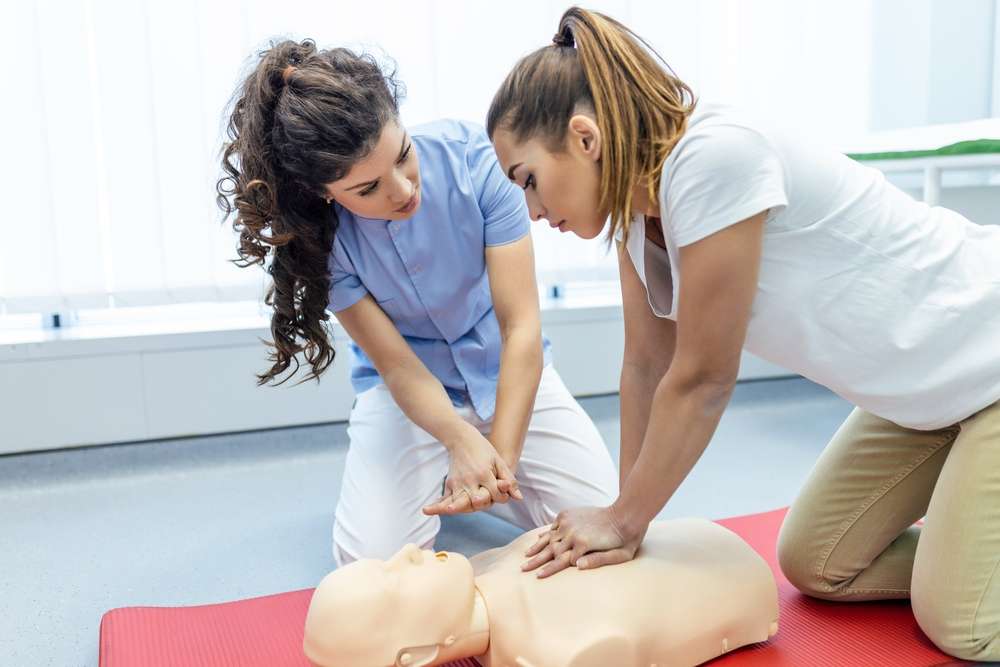Launch Your Healthcare Career as a Medical Assistant
Medical assistant programs teach both clinical and administrative skills to help you enter a stable healthcare role quickly. Learn about program lengths, certification paths, hands-on externships, costs, and which credentials employers prefer to improve your job prospects in growing outpatient and primary care settings.

Medical assistant training gives you practical clinical skills and administrative know-how to begin a healthcare career quickly. Programs vary in length and depth, and many include supervised clinical experience to prepare you for entry-level roles in offices, clinics, and hospitals. Below is a clear guide to timelines, job outlook, the skills that matter, how to evaluate programs, costs, certification options, and final tips before enrolling.
How long will medical assistant training take?
Training length depends on the credential you pursue and the institution you choose. Short certificate or diploma programs are often the fastest route, typically finishing in about 9 to 12 months. If you choose an associate degree, expect roughly two years of study. Some community colleges and vocational schools offer accelerated or intensive tracks that can shorten completion time, while part-time options extend the timeline for students who are working or have other commitments. When selecting a program, balance how quickly you want to enter the workforce with how much hands-on clinical practice and academic depth you want.
Job outlook and potential career paths
Employment prospects for medical assistants are strong. The U.S. Bureau of Labor Statistics forecasts faster-than-average growth driven by an aging population and more outpatient services. Trained medical assistants commonly work in physicians offices, outpatient clinics, hospitals, specialty practices, and urgent care centers. With additional experience or training, you can move into supervisory positions, specialize in areas like phlebotomy or EKG, or shift into administrative roles such as office management or medical billing and coding.
Essential skills that make a medical assistant stand out
Successful medical assistants combine clinical competence with strong interpersonal skills. Core technical tasks often include taking vitals, performing phlebotomy, assisting with minor procedures, and administering medications where state regulations permit. Familiarity with electronic health record systems and common medical devices is increasingly important.
Equally valuable are soft skills: clear communication, empathy, attention to detail, punctuality, and teamwork. Medical assistants frequently switch between patient-facing care and front-desk responsibilities, so time management and adaptability are crucial. Demonstrating professionalism and a patient-centered attitude can set you apart to employers and clinicians alike.
How to choose the right training program
When comparing programs, evaluate these key elements:
- Accreditation: Confirm the program is accredited by a recognized agency. Accreditation helps with eligibility for national certification exams and is often preferred by employers.
- Curriculum balance: Look for coursework that blends classroom theory with hands-on clinical skills, including EHR training, phlebotomy, medication administration basics, and medical law and ethics.
- Clinical experience: Externships or clinical rotations let you practice skills in real healthcare settings and make professional connections.
- Instructor qualifications: Instructors with current clinical experience offer practical insights and up-to-date practices.
- Outcomes data: Ask about graduation rates, pass rates on certification exams, and job placement statistics to gauge program effectiveness.
- Practical logistics: Consider schedule flexibility, availability of online or hybrid formats, tuition and fees, and financial aid options.
Visiting campuses, speaking with admissions staff, and contacting alumni or local employers can help you assess how effectively a program prepares graduates for the workplace.
Costs and financial considerations
Programs vary widely in cost depending on length, credential level, and institution type. Below is a sample comparison to help you budget.
| Program Type | Typical Duration | Approximate Cost Range |
|---|---|---|
| Certificate/Diploma | 9–12 months | $3,000 – $10,000 |
| Associate Degree | ~2 years | $6,000 – $25,000 |
| Accelerated/Bootcamp | 4–9 months | $5,000 – $12,000 |
Costs are approximate and will vary by school, location, and whether you qualify for in-state tuition or financial aid.
When planning, factor in textbooks, lab fees, uniform costs, background checks, immunizations, and certification exam fees. Explore financial aid, grants, payment plans, and employer tuition reimbursement if available.
Certification options and why they matter
Certification is not universally required, but it is widely preferred by employers because it demonstrates verified competence. Two commonly recognized credentials are the Certified Medical Assistant (CMA) from the American Association of Medical Assistants and the Certified Clinical Medical Assistant (CCMA) from the National Healthcareer Association. Most certification routes require graduation from an accredited program and passing a national exam. Some states also have rules on which clinical duties medical assistants may perform, so check local regulations.
Holding national certification can improve job prospects and salary potential. After initial certification, pursuing continuing education or specialty certificates in areas like pharmacology, EKG, or phlebotomy can broaden your responsibilities and marketability.
Final considerations before you enroll
A medical assistant program can be an efficient entry point into healthcare, offering hands-on patient care and administrative experience. Decide how much time you can dedicate to training, whether you want a rapid path into employment or a more comprehensive academic foundation, and which credential level best suits your long-term goals.
Choose programs that combine solid classroom instruction with supervised clinical practice and reliable career support. If you enjoy working directly with patients, handling a variety of tasks each day, and the possibility of advancing into specialized or supervisory roles, pursuing medical assistant training can be a practical and rewarding step into the healthcare field.
This article is for informational purposes only and should not be considered medical advice. Please consult a qualified healthcare professional for personalized guidance and treatment.






